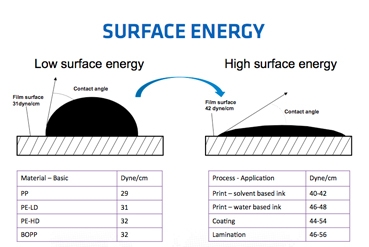Technical
| 標題 | 圖片 |
|---|---|
September 28, 2018 | Daywey Chen
Typically speaking water-based ink could be considered if your application is to run at slower printing speed and on an absorbent substrate. The water-based ink that consists of much less organic solvent could provide printers with less VOC emission issues to worry about. At KYMC we had a customer that ran solely on water-based ink as VOC emission permits are required in the region. As the sales orders fluctuate from month to month, the VOC emission permit may be insufficient or excessive depending on the order quantity of that month. To avoid this issue...
August 30, 2018 | Daywey Chen
Must know screening concepts to succeed in Flexo printing
AM screening and FM screening both has its advantages and disadvantages. In general FM screening are more suitable for details images, highlights, and shadows. AM screening performs better in mid-tones. FM are more consistent in its ink delivery, therefore, some say that it is able to produce a very stable appearance. This could be good things unless your print doesn’t match your proof. When the mismatch occurs, it will be difficult for press operators to tweak the appearance on the press. As Technologies advances, the newer XM screening takes advantage of AM & FM screening to produce to better print quality.
AM screening and FM screening both has its advantages and disadvantages. In general FM screening are more suitable for details images, highlights, and shadows. AM screening performs better in mid-tones. FM are more consistent in its ink delivery, therefore, some say that it is able to produce a very stable appearance. This could be good things unless your print doesn’t match your proof. When the mismatch occurs, it will be difficult for press operators to tweak the appearance on the press. As Technologies advances, the newer XM screening takes advantage of AM & FM screening to produce to better print quality.
July 20, 2018 | Daywey Chen
As the flexible packaging industry evolves and as environmental awareness surges, the printing methodologies change. In the flexible packaging industry, the flexographic process is widely adopted in the west and are starting to spread in the east. Below we compare the cost of the two processes from a few perspectives: printing operation, equipment investment, printing plate storage investment and printing plate cost, lifespan and lead time.
April 20, 2018 | Daywey Chen
At KYMC we have observed the integration of the elastomer plate and photopolymer plate usage. Taking advantage of each strength. The more durable and seamless attributes of the elastomer plate are used for printing repeated background designs. The fragmented designs and designs that require many versions are printed using photopolymer plates.
April 6, 2018 | Daywey Chen
Ghosting describes the faint image produced and is most noticeably on in large solid areas. Ghosting is most commonly caused by the failure of the anilox to consistently supply sufficient ink throughout the printing process. Therefore, looking into your anilox is always a good way to start.
March 23, 2018 | Finn Hinze
Any man-made synthetic material contains long homogeneous molecule chains that form a strong and uniform product. These chains join other long chains, leaving only a few open chain ends, and therefore only a small number of surface bonding points, and this is where the problem of low adhesion and what is known as ‘wettability’ occurs. Wettability is the ratio between the surface energies of the liquid ink and the solid substrate. In general, a material can be wetted if its surface energy, measured in dyne/cm, is greater than the surface energy of the liquid. If it’s the other way around, there will be adhesion problems.
March 9, 2018 | ToyoInk Co., Ltd.
Toyo Ink research labs in Japan solved the technical challenge of non-evaporative wet trapping in flexo with the development of an EB-curable ink system for CI flexo printing: The Elex-one™ FL series. Since other contemporary, conventional EB flexo inks contain a small percentage of volatiles (solvents and water), a small trace of such ink components may evaporate during printing. This necessitates the continuous addition of lost components to retain print quality and often leads to discrepancies in ink stability and quality during printing. Elex-one is a completely non-volatile ink so there is no concern for the evaporation of volatile materials...

































